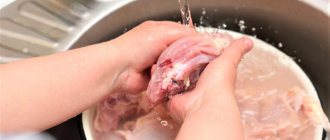The refrigerator has long become a familiar attribute of the modern kitchen. It allows you to store ready-made meals for 1-2 days, and purchase perishable and frozen foods with a reserve. Refrigeration equipment is especially helpful in the summer heat, when there are simply no other ways to store food. It is advisable to place even vegetables in a specially designated box.
Like any other kitchen appliance, the refrigerator needs timely and proper care. Traditional drip refrigerators and freezers need to be defrosted and cleaned as ice builds up. More convenient units with the know frost system should also be washed periodically. After all, crumbs and food particles accumulate on shelves and in sections. Accidentally spilled liquids are added to them - juices, broths, milk, as well as dirt from vegetables.
Since store packaging and weighed, piece products are far from sterile, various microorganisms get inside the unit. If you are lazy with cleaning, foreign odors, harmful mold, and pathogenic bacteria appear inside the chamber. To avoid unpleasant consequences for all household members, refrigeration equipment must be kept clean. And experienced experts will advise how to do this without wasting time and money.
Products used when cleaning the refrigerator
Since the internal surfaces of the refrigerator are constantly in contact with food products, containers with ready-made dishes are placed on the shelves, bread and sausages are placed on the shelves, it is prohibited to use household chemicals uncontrollably to clean them. It is necessary to select specialized compounds whose proximity to food does not pose a danger to people. Or use folk remedies. They are as effective as store-bought chemicals, but less dangerous.
Vinegar
The saturated acidic environment perfectly fights most bacteria, eats away old stains well and gives glass surfaces a special shine.
- Mix 6-9% table vinegar with warm water in a 1:1 ratio. To do this, take a plastic basin or glass bowl. It is better not to use enamel and metal utensils. You can pour the liquid into a spray bottle - it’s more convenient.
- Moisten the cloth and sponge in the solution, remove the largest dirt first. If necessary, set aside to soak for 15-20 minutes. Rinse or change the napkin.
- Treat all internal surfaces, parts, including grooves for shelves, rubber seals, and the farthest corners of the chamber.
- Wipe with a clean damp cloth, then dry.
- Wash shelves and drawers in the solution as well. If the dirt is difficult to wipe off, then soak the elements for half an hour. Wipe dry, let dry.
Leave the door open until completely dry. Reinstall the shelves and connect to the network. The same treatment is done before turning on the unit for the first time.
Preparation
It is permissible to start cleaning the refrigerator only after disconnecting the unit from the power supply. first set the temperature regulator to zero .
All food and containers are removed from the chamber, a thorough inspection is carried out, getting rid of expired and spoiled food. Perishable and frozen foods are placed in a bowl and placed in a cool, dark place or immersed directly in a bowl in a bath of ice and cold water.
All dirty containers and packaging are also washed, otherwise the smell will not go away after they are put back into the chamber.
You can speed up defrosting by spraying the walls with hot water from a spray bottle . You can place an open container or plastic bottles filled with hot liquid in the chamber. As the water cools, change it to hot water, and so on until the ice thaws.
All removable shelves, containers, and side racks will have to be removed. It is most effective to wash them separately - directly under running water or in a basin with soapy water.
Soda
Soda perfectly removes old fat, unpleasant odors, fungi and microorganisms. Besides, it is in every home. How to use it?
- Dilute two tablespoons of powder in 0.5 liters of warm water and dissolve.
- If there are problematic stains on the shelves and walls, for example, from spilled and dried broth or vegetable oil, then it is recommended to apply a paste of soda slightly diluted with water on them and leave for 20-30 minutes.
- Thoroughly rinse all surfaces, shelves and baskets with the solution. Wipe the rubber bands.
- Wipe dry with a clean, dry cloth and leave the unit open to dry thoroughly.
In addition to outright dirt, soda perfectly whitens yellowed stains, returning the refrigerator to its original perfect whiteness.
Using odor absorbers
Nowadays, the lines of household chemical manufacturers include a variety of products that can absorb odors in the refrigerator. They come in ball form that can be placed directly on shelves, or in cartridge form with a grid hanger.
They contain seaweed extracts, deodorizing additives, activated carbon, and mineral salts in the form of crystals - all of which effectively neutralize unpleasant “odors.”
One of the latest developments is an electric ionizer for a refrigerator . This is a device that saturates the chamber space with useful ions. They act not only as absorbers and fresheners, but also destroy pathogenic bacteria.
Some foods also have absorption properties, in particular:
- lemon - arrange citrus peels on shelves;
- salt - place in open jars;
- rice - place in a wide saucer;
- apple - cut and put on a shelf, change the fruit as it dries;
- black bread - cut into pieces and place in the chamber.
Aromatic spices and ground coffee can neutralize and eliminate the “odor.” They are scattered into small containers and placed inside the unit in random order. But you should keep in mind that all dishes and products can be saturated with such spicy aromas.
An interesting option is to combine lemon with baking soda. The lemon is cut into two halves, the pulp is scraped out, and a spoonful of soda is poured into the resulting cavity. This improvised air freshener is placed vertically on a saucer and placed in the refrigerator.
Lemon acid
You can use fresh lemons or powdered citric acid.
- Dilute two tablespoons of juice or 1 teaspoon of powder in half a liter of warm water.
- Heavy stains can be rubbed with a cut lemon slice or soaked with a more concentrated acid solution - take a glass of water per teaspoon.
- The insides of the chambers are wiped from top to bottom with a moistened sponge or cloth. Hard-to-reach places can be treated using a sprayer or a brush with a long handle.
- After cleaning, the surfaces must be wiped dry.
A pleasant bonus of this method is the delicately refreshing aroma of lemon, which lasts for several days.
Adsorbers, fresheners, flavors
Flavorings mask, but do not remove, the cause of the stench. To remove stench from refrigerated cabinets, do not use fresheners for furniture, toilets or car interiors. In home refrigerators, the air is purified with food-safe devices, which are available in the following forms:
- Container with a carbon filter in the shape of an egg. Coal powder is a natural adsorbent that absorbs odors. The case indicates a change in temperature: at low temperatures it is painted white; when elevated it turns blue. The filler is renewed after 1.5 – 2 months.
- Gel adsorbers contain algae extract, lemon extract, and silver ions. They disinfect the air and fill it with a light citrus scent. Containers with gel are placed in chambers.
- Dispenser neutralizers consist of a removable carbon filter and a plastic container. The kit includes additional filters. The harmless absorber is allowed to be placed next to food.
- Balls filled with silica gel absorb aromas and excess moisture. The packaging is attached to the wall or 4-5 bags are placed in the chamber, which are changed every 3-6 months.
The devices kill odors, but to maintain the effect, they first eliminate the source of the stench.
Adsorbers act quickly and safely
Ammonia
Ammonia is a caustic substance, so it should not be used more than once a month. Otherwise, plastic and rubber parts will very quickly become unusable. How is it used?
- You will need a regular 10% aqueous solution of ammonium hydroxide, which can be purchased at a pharmacy.
- Dilute a 30 ml bottle in one and a half glasses of warm water.
- Wash the internal parts of the unit with a dampened cloth. If necessary, repeat the treatment.
Ammonia effectively discolors yellow stains, effectively removes stubborn dirt and grease, and disinfects.
Methods for removing stench, depending on the causes of its occurrence
Before getting rid of an unpleasant odor in the refrigerator, it is necessary to determine the causes of the odor, so it will be more effective to combat the stench. Folk recipes, store-bought medications, aroma absorbers and devices help to cope with the problem.
Fungus
Sometimes the stench is caused by mold that has settled in the refrigerator. To clean the insides of the device from black spots, use universal home cleaners (vinegar, potassium permanganate, soda) or store-bought preparations that destroy fungal spores:
- Zool Zl-377;
- Mister Muscle;
- Cif.
It is difficult to fight mold.
Sometimes methods are combined. A soft cloth is moistened with the product and the grooves, walls, and removable parts are wiped. They grab a gutter for draining accumulated condensate, rubber, a tray: mold often forms in these areas. After treatment with gels, the surfaces are washed thoroughly and wiped. Then the installation is dried with a fan heater; Turn on the UV lamp for half an hour: ultraviolet rays will completely destroy fungal spores.
Additional Information! To prevent the re-formation of mold, place an open pack of soda in a cleaned and ventilated unit.
Cheap plastic
Low-quality dyes and plasticizers used in the manufacture of cheap plastic emit an obsessive odor. A strong stench can be felt during the first days of operation of a new refrigerator. To kill the smell, the unit is turned off and kept open for 3 to 5 days. If the stench persists, the equipment should be wiped with a napkin moistened with diluted lemon juice, ammonia or liquid soap. Place a bowl with a mixture of water (1/2 cup) and vinegar (1/3 cup) on the shelf. Place half an onion. Popular home absorbents are often used:
- salt;
- sugar;
- tea;
- rice;
- soda;
- lemon zest.
Odors are often caused by proliferating microorganisms.
Household odor absorbers help clean equipment from odors caused by poor-quality materials.
Reference! Sometimes plastic continues to stink even after cleaning. The sealant helps stop the evaporation of toxic substances. In No Frost models, the back panel is removed and treated on both sides with silicone. After drying, install it in its original place. For refrigerators with a drip system, the walls are covered with a transparent sealant.
Microorganisms
If the stench comes from a clean refrigerator, in which there is no missing food or mold, then the cause is hidden in invisible microorganisms. Microbes produce foul-smelling gases. To kill the stench, you will have to stock up on time and patience. Carefully dismantle the drainage system parts and plastic linings. The drainage tubes and container are washed with a solution of laundry soap or ammonia. Treated with a bactericidal substance:
- alaminol;
- lysarine;
- chlorhexidine;
- MediaDezom;
- bianol.
The drugs are used according to the instructions. After cleaning, the parts are thoroughly dried, ventilated, and returned to their places.
Disinfectants, if the problem is advanced, may not help the first time
Contamination on components and parts
If, after turning on the refrigerator, an odor reminiscent of lubricating oils spreads throughout the apartment, it means that damage has occurred to the components or lubricant has remained on the internal components after assembling the equipment. To determine the cause of the stench, turn off the refrigerator.
Carefully clean with a vacuum cleaner and wipe the back wall first with a damp, then dry cloth. Remove the lower part of this panel. Contamination on parts is removed with soap or soda solution. Wipe, dry; then the unit is turned on. If it still smells, it means the nodes are damaged. To fix the mechanism, they call a technician from the service center.
Good to know, read: What to do if a mercury thermometer at home breaks and mercury leaks out?
Fan failure
At the bottom of the refrigerator, next to the rear panel, there is a container for collecting condensate. A fan is installed near the tray. Due to the circulation of air masses and heat coming from the compressor, the condensate evaporates. Therefore the container does not overfill.
When the device breaks down, the humidity increases sharply because the evaporation of water from the container slows down. In a constantly moist tray, microbes multiply, causing a stench. Moving through the tube, the stench enters the refrigerator and freezer compartments.
To eliminate the stench, control the operation of the fan; identify the reasons that impede the movement of air. Call a technician from the service center.
Clogged drainage system
Wet cleaning, installation of disinfectants and fragrances will not remove the smell of rotten meat from the unit if the drainage system is clogged. Sometimes, after an accidental puncture or tear in a plastic bag with frozen vegetables, food particles get into the drainage tube and chute.
If you cannot determine the cause of the smell yourself, then call a professional.
The system becomes clogged with dirt when exposed parts are rarely maintained. Colonies of microorganisms develop in debris moistened with condensate. In addition to the smell, the occurrence of this problem is indicated by icing on the walls of the chambers, water in the lower part of the equipment, and puddles on the floor.
Disinfect and dry the container for collecting condensate. The drainage hole is cleaned with a cotton swab or a narrow thin brush: the moistened object is carefully inserted inside, scrolled, and removed. The action is repeated until the cleaner becomes clean. After complete defrosting, a warm solution of a detergent (lemon juice, Fairy, ammonia) is injected into the hole. If the drainage in the freezer is clogged, call a professional.
Additional Information! To prevent the appearance of stench, the drainage unit is disinfected at least once every 6 months with hydrogen peroxide or Kenolux EcoDez, Desavid. The product is diluted according to the instructions. Pour it into the drainage channel with a syringe, and after 5–15 minutes, rinse it with plenty of water.
The smell of burning
If there is a fault in the electrical wiring, the smell of burning rubber or plastic can be clearly felt. To prevent a short circuit and irreversible damage to the unit, first quickly turn off the power to the apartment, then remove the plug from the electrical outlet. The next step is to call a specialist.
Soap
Anything will do, but it’s better to use dark laundry, 72%. The block is grated. The resulting shavings are dissolved in warm water and thoroughly foamed with a sponge.
This foam (not a solution!) is applied to problem areas or to the entire internal surface. Leave for 15-25 minutes. Remove with a clean damp cloth and wipe dry. Very dirty elements can be wiped with slightly diluted soap slurry.
Features of cleaning different models
The solution to the problem of how to clean a refrigerator differs significantly for each model, depending on its design features. It should be noted that not only old, but also new, newly purchased units are subject to hygienic procedures, regardless of the presence or absence of specific aromas.
How to clean a Know Frost refrigerator
Many modern refrigerators are equipped with a special No Frost freezing system, which prevents the formation of ice inside the freezer. A similar effect is achieved by innovative ventilation technology that optimally distributes air flows inside the unit. The movement of air removes all condensation from the walls, and they always remain clean.
Such devices defrost automatically, but at certain intervals - this must be done manually. At the same time, it is necessary to wash the inside of the refrigerator after defrosting, including the freezer compartment. If defrosting was carried out recently, and the refrigerator requires unscheduled cleaning, cleaning can be done without defrosting the unit.
The washing procedure without defrosting is performed quickly in a certain sequence:
- The device is disconnected from the supply voltage.
- The freezer compartment remains closed.
- All shelves are removed, washed and dried.
- The inner walls are cleaned of dirt to eliminate odors.
- The outer covering is washed.
- All moisture is collected with paper napkins or towels.
- The shelves and containers are returned to their places, food is placed on them, after which the refrigerator is put into operation.
Chlorine-based compounds
Today, special departments for the home offer a huge selection of household chemicals, the composition of which allows you to get rid of odors, mold and mildew. Products based on chlorine-containing components are especially popular.
The advantages of such products are considered to be their quick ability to correct the situation. To clean, it is enough to use 10 drops of the cleaning composition, which are dissolved in 5 liters of water. Using a damp cloth, wipe the shelves, enamel and rubber seals.
What to use against mold
If mold or mildew has appeared inside the refrigerator, you will need to use special compounds to remove it. What to choose? We invite you to familiarize yourself with proven substances that help eliminate pathogenic microflora.
They wear:
- Chlorine bleach. Chlorine-containing products block the growth and spread of fungus on the surface of enamel, rubber and plastic;
- Hydrogen peroxide. This will require the use of a 3% solution. Thanks to it, it is possible to quickly disinfect the internal parts of the refrigerator;
- Ammonia. A small amount of this component ensures the removal of fungus inside glass, plastic and enamel coating. At the time of cleaning, it is necessary to ensure access to oxygen. The fact is that this composition has an unpleasant odor;
Special product for removing mold. The composition of such a liquid contains components that block the vital processes of fungus and mold. As a result, pathogenic microflora quickly dies.
The disadvantage of such products is the need for regular processing. It is prohibited to use the refrigerator during such manipulations.
What is the best way to clean the refrigerator freezer after defrosting and what to pay attention to
The appearance of an unpleasant aroma in the freezer can trigger a sudden power outage while the owners are away. All food will spoil after defrosting. Before eliminating the smell in the refrigerator, you need to turn off the equipment, defrost it and throw away everything that has spoiled. For cleaning, you can use any of the above options, paying special attention to places where liquid from defrosted food could leak. All rubber bands and cracks should be treated, then rinsed with clean water and wiped the camera dry. And only after this the issue of smell will be removed.
The camera needs to be defrosted first.
How to wash the inside of a refrigerator if it does not have a No Frost system
Not everyone decides to part with high-quality products made in the last century. Domestic refrigerators, made in strict accordance with GOST systems, continue to work in many families. They require frequent defrosting and careful care. General cleaning of such devices is necessary at least once every two months. To do this, the cabinet is disconnected from the power source and defrosted for several hours until all the ice has melted.
To speed up defrosting, you can put a couple of bottles of warm liquid or a heating pad in the freezer
Important! Some people recommend using a hairdryer to defrost. Be extremely careful - if water gets into the hair dryer, you can get a severe electric shock!











